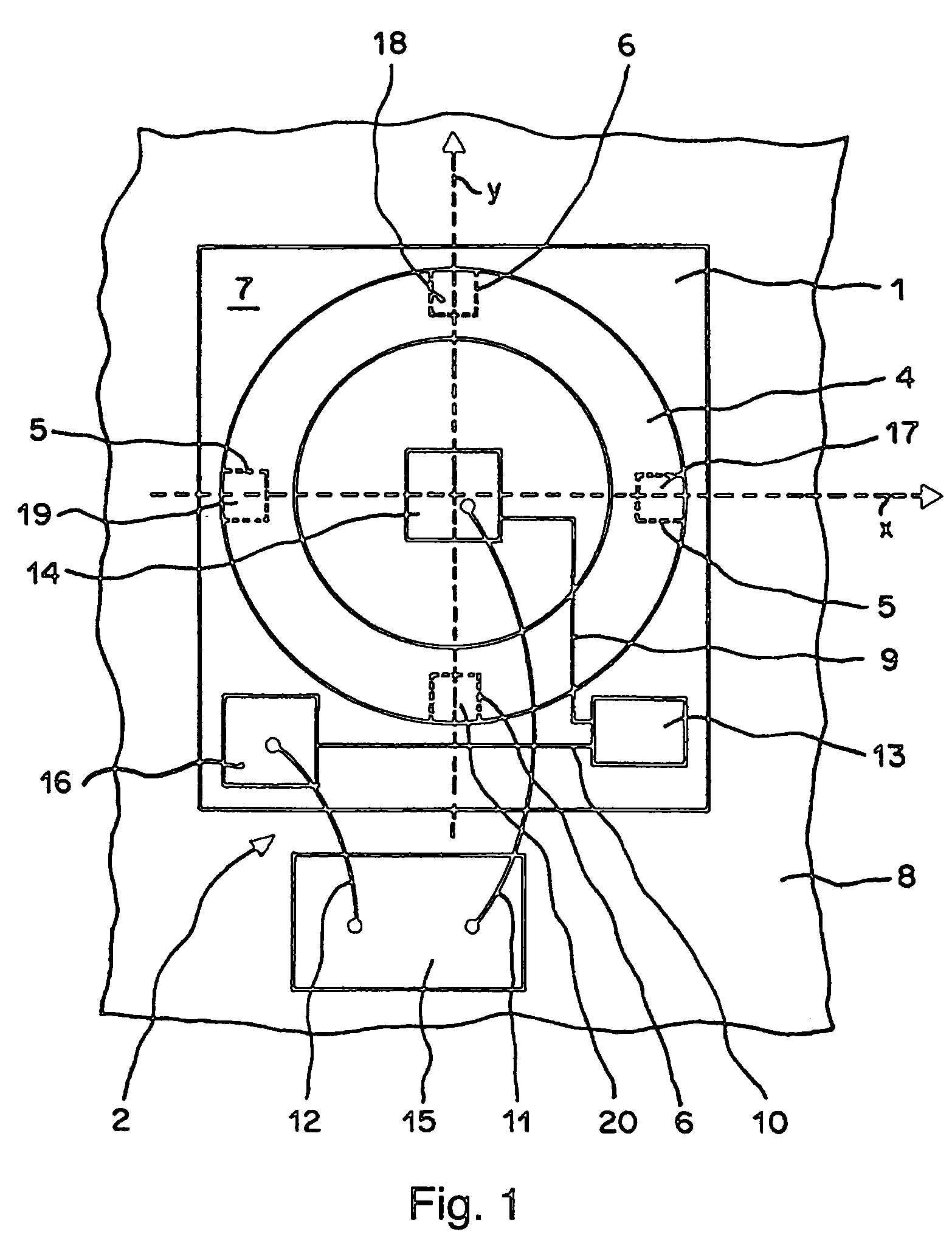Magnetic field sensor
a magnetic field sensor and sensor technology, applied in the direction of magnetic field measurement using galvano-magnetic devices, acceleration measurement using interia forces, instruments, etc., can solve the problems of unintentional magnetisation of the ferromagnetic core, insufficient sensitivity, and high cost of the sensor, so as to reduce the size, reduce the cost, and reduce the size of the magnetic field sensor
- Summary
- Abstract
- Description
- Claims
- Application Information
AI Technical Summary
Benefits of technology
Problems solved by technology
Method used
Image
Examples
Embodiment Construction
[0018]FIG. 1 shows a plan view of a magnetic field sensor formed as a semiconductor chip 1 for the measurement of two components of a magnetic field. A cartesian x,y,z system of co-ordinates serves as reference system whereby the z direction runs vertically to the drawing plane. The magnetic field sensor comprises an exciter coil 2 with at least one winding to which current is applied, a ring-shaped ferromagnetic core 4, two read-out sensors 5, 6 and an electronic circuit 7. The read-out sensor 5 serves to detect the x component of the magnetic field, the read-out sensor 6 serves to detect the y component of the magnetic field. Preferably, each of the read-out sensors 5, 6 consists of two locally separated but electrically connected sensors. The magnetic field sensor is produced using a technology with which the electronic circuit 7, parts of the exciter coil 2 and the read-out sensors 5, 6 are first manufactured using a standard CMOS technology and then the ferromagnetic core 4 is ...
PUM
 Login to View More
Login to View More Abstract
Description
Claims
Application Information
 Login to View More
Login to View More - R&D
- Intellectual Property
- Life Sciences
- Materials
- Tech Scout
- Unparalleled Data Quality
- Higher Quality Content
- 60% Fewer Hallucinations
Browse by: Latest US Patents, China's latest patents, Technical Efficacy Thesaurus, Application Domain, Technology Topic, Popular Technical Reports.
© 2025 PatSnap. All rights reserved.Legal|Privacy policy|Modern Slavery Act Transparency Statement|Sitemap|About US| Contact US: help@patsnap.com



